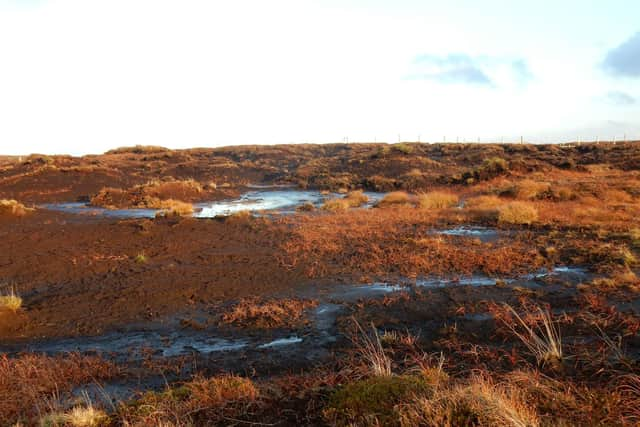Follow Yorkshire's example on protecting peatland or risk failing on climate action, Wildlife Trusts warn
UK peatlands hold three times as much carbon as woodlands, but in their current degraded state – with peat damaged, drained, extracted or burned –they release 23 million tonnes of carbon dioxide a year, some five per cent of the UK’s annual greenhouse gas emissions, the Wildlife Trusts said.
Peatlands are also a precious wildlife habitat, and are vital for storing and filtering water, reducing flooding and cleaning water supplies, the coalition of wildlife groups from around the country said. The Wildlife Trusts accused the Government of failing to be ambitious enough in ending damage to the UK’s peatlands and restoring a significant proportion of what is already harmed.
Advertisement
Hide AdAdvertisement
Hide AdA peat strategy for England has been delayed since 2018, and Government targets for restoring 35,000 hectares of peatland by 2025 and £50 million restoration funding fall far short of levels urged by UK climate advisers, the Trusts said.
The Government recently announced plans to legislate to prevent the burning of heather and other vegetation on protected blanket bog habitats where the greatest volumes of peat can be found. The proposed legislation will provide additional protection to an estimated 62 per cent of the blanket bog habitat in England.
But the Trusts say the partial ban on peat burning announced by the Government will only cease the practice on a small number of peatlands.
Charities are stepping in to fill the gap, including Yorkshire Wildlife Trust, which has restored a third of the blanket bog in Yorkshire, and has plans for more restoration, moss planting and ditch blocking.


Advertisement
Hide AdAdvertisement
Hide AdLast month it announced that restoration work on the most eroded area of blanket bog in Yorkshire, Fleet Moss in North Yorkshire, is receiving a boost with a £312,000 grant from the Garfield Weston Foundation.
The bog at Fleet Moss is criss-crossed with drainage ditches and erosion channels that flush water and sediment into the Wharfe and Ure river catchments
Northumberland Wildlife Trust has helped restore 2,000 hectares of peatland across the Border Mires around Kielder Forest, clearing conifer plantations, blocking agricultural ditches and creating 130 pools for rare birds such as the curlew.
And Lancashire Wildlife Trust is restoring 347 hectares of peatland including former commercial peat extraction site of Little Woolden Moss and the formerly drained Astley Moss, which are being reclaimed by sphagnum mosses, hare’s tail cottongrass and heather.
Advertisement
Hide AdAdvertisement
Hide AdBut with only a quarter of the UK’s three million hectares of peatland in a natural state, Craig Bennett, chief executive of The Wildlife Trusts, said it was a “matter of extreme urgency” that the Government leads the way in nursing fens and bogs back to health.
He said: “Burning should be banned everywhere and this precious habitat should be rewetted to stop moorland fires raging and to help rare and unusual wildlife to return.”
A Defra spokesperson said: “Our peatlands have great potential as a natural store of carbon, as well as protecting habitats, providing a haven for rare wildlife and being a natural provider of water regulation.
“We have worked closely with stakeholders to develop the strategy over the past two years and we will be setting out further measures to protect our crucial peatlands this year, as part of a package of measures to protect England’s iconic landscapes and deliver nature-based solutions.”
Advertisement
Hide AdAdvertisement
Hide AdIn December the Government launched the Lowland Agricultural Peat Taskforce, a group tasked with improving the condition of England’s farmed lowland peat, which is responsible for 86 per cent of England’s peatland’s carbon emissions
